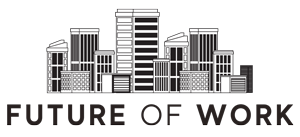Stress, burnout, and disengagement are not just buzzwords; they are real issues affecting the productivity and morale of workers across industries.
As companies strive to create healthier, more fulfilling work environments, the traditional markers of productivity and engagement are being re-evaluated. In response, business leaders must be proactive in revitalising their employees and setting a new standard for a positive work environment. Here’s how they can accomplish it.
Understanding the Problem
Before delving into solutions, it’s crucial to understand the root causes of workplace stress. Long hours, unrealistic deadlines, lack of work-life balance, and micromanagement are just a few factors contributing to the pressure cooker environment many employees find themselves in. Moreover, the rise of remote work has blurred the lines between professional and personal life, making it even more challenging to switch off and recharge.
According to Vitality’s new Britain’s Healthiest Workplace survey, those under 30 lose an average of 59.7 days a year – or more than a day a week – of productivity as a result of poor health. The outlook doesn’t look promising, with burnout and stress being a common theme that has affected productivity, leaders all over are looking for new ways to re-engage employees and support talent wherever they can.
As a business owner, I understand how pivotal it is to create and sustain a culture that encourages progression and learning but also makes room for rest and recreation. My team consists of Gen Z employees who have a different approach to thinking and working compared to their more senior colleagues. Recognising these differences and applying them to your company’s initiatives is a key way of optimising productivity. By separating tasks and giving autonomy to individual employees you are giving them the space to grow and develop at their own pace. While a typical day will have various targets and deadlines to meet, providing tools and routine training to aid their work will enhance efficiency and in turn make them meet deadlines sooner rather than later.
Open up the dialogue
To foster a resilient team that can thrive in challenging periods you must be upfront about expectations from day one. A good way to do this is by doing interviews differently. In my business, for instance, we interview people in a relaxed environment like a cafe and alter the format to suit the individual. For example, if they are neurodivergent, we will make sure to give the questions in advance and help them prepare in any way possible. By being a trustworthy employer even before they have been recruited you are opening more doors for the company as candidates will appreciate the effort is being put in right from the start rather than being left in the dark which is what often happens. Establishing a rapport early on will encourage recruits to be productive and approach you and your team for advice.
Recognising flexibility
Productivity management isn’t just about squeezing more work out of employees; it’s about optimising resources to achieve better outcomes while ensuring the wellbeing of the workforce. Traditional methods often rely on strict schedules, micromanagement, and a one-size-fits-all approach that can exacerbate stress levels rather than alleviate them.
To combat fatigue and prevent eventual resentment, business leaders must embrace flexibility. The new government rules now require businesses to consider flexible working to new employees from their first day. Changes like this reflect the shifting cultural attitudes towards work-life balance and how employees have more confidence to take control of their work. Recognising that employees have different working styles and identifying individual peak productivity hours can reform how work is managed. Flexible scheduling, allowing employees to work when they’re most productive, promotes a healthier work-life balance and empowers individuals to take ownership of their time.
Solidifying trust and a flexible schedule transcend the immediate team as customers too will benefit from better customer service as employees will be more engaged and happier to go the extra mile. Incentivising work is the key to establishing growth and monitoring progress at an arm’s length will give the employee confidence to be more open and identify areas of improvement.
Empowering Autonomy
Micromanagement is a productivity killer and a significant source of stress for employees. Instead of breathing down their necks, empower your team with autonomy. Set clear goals and expectations, provide the necessary resources, and support, and then step back and trust your employees to get the job done. This fosters a sense of responsibility and ownership, boosting morale and productivity in the process.
Prioritising Wellbeing
Gone are the days when productivity was measured solely by the number of hours spent at the desk. Today, companies are recognising the importance of employee wellbeing as a driver of productivity. Implementing wellness programmes, offering mental health support, and encouraging breaks throughout the day are just a few ways to prioritise the holistic health of your workforce.
CEOs who are in tune with their team and are willing to be there when they are struggling in their personal lives are seeing the positive effects in increased revenue and retention. Whether it’s providing legal support to employees going through a difficult time, or time off so they can look after a relative in hospital, work benefits which are accommodating boost morale and loyalty for the long-term.
Embracing Technology
I can’t understate just how useful technology has been as a tool to monitor productivity and support employees. From project management tools that streamline workflows to communication platforms that facilitate collaboration, there’s no shortage of tech solutions designed to make work more efficient and enjoyable. However, it’s essential to strike a balance and avoid overwhelming employees with too many tools. Regular training is required to ensure each team member is comfortable and capable and to prevent knowledge gaps which can slow progress and impact the wider the team’s performance.
Cultivating a Culture of Feedback
Feedback is a powerful tool for improvement, yet many companies shy away from it or only offer it during formal performance reviews. Cultivating a culture of continuous feedback, where constructive criticism is welcomed and encouraged, can significantly enhance productivity and morale. Regular check-ins between managers and employees provide an opportunity to address issues promptly and course-correct when necessary.
Conclusion
In conclusion, the sign of a good company is a mobilised and enthusiastic team which can prioritise self-development as well as improving the company and impressing clients.
As demonstrated, de-stressing the workforce involves a multifaceted approach that incorporates flexibility, autonomy, wellbeing, technology, feedback, and purpose. By adopting new methods of productivity management that empower employees, promote work-life balance, and foster a culture of support and collaboration, companies can create healthier, more fulfilling work environments where individuals thrive. As the workplace faces new challenges, it’s time to give the workforce special treatment and devolve time to getting employees back on track for continued success.

Adam founded Go Live Data to really drive change in what is seen as a stagnated industry. With a particular focus and track record in business strategy, operations, product marketing and sales, Adam's professional career has always been focused on helping customers drive revenue via strategic data lead strategies and has guided some of the world's largest businesses through GDPR to help update and maintain a compliant database as well as understand what good looks like in terms of outreach to new prospects for his clients.






